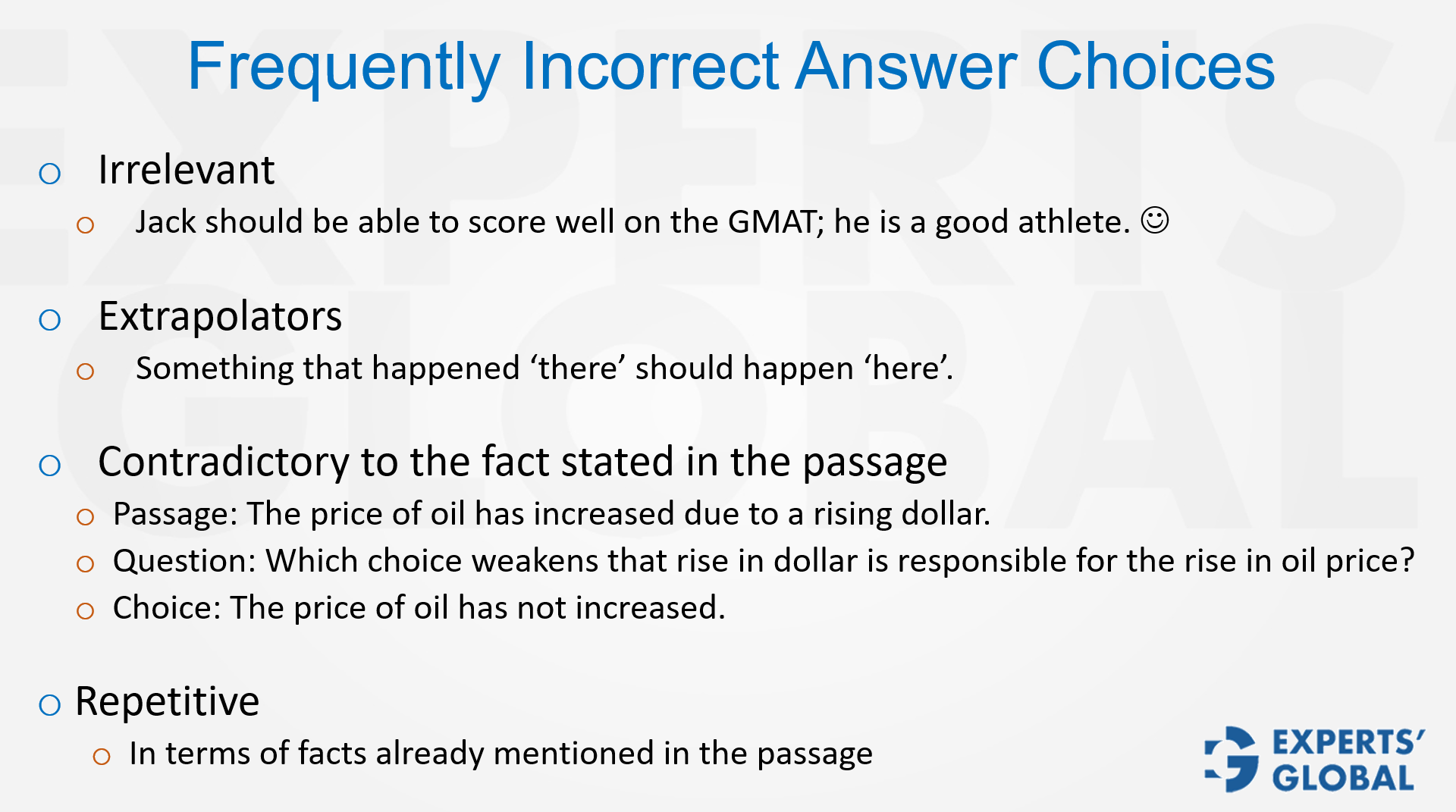Invest 30 seconds...
...for what may lead to a life altering association!
Help Line
- +91.8800.2828.00 (IND)
- 1030-1830 Hrs IST, Mon-Sat
- support@expertsglobal.com
...for what may lead to a life altering association!


Incorrect answers on GMAT Critical Reasoning commonly show four traits: irrelevance, there to here extrapolations, contradictions, and repetition of stated facts. Avoid these traps by eliminating them quickly and consistently to improve accuracy and speed on the test across GMAT’s CR questions.
Is ISB your prime target? Look at our ISB admission consulting practice!
Critical Reasoning rewards disciplined evaluation of claims and evidence. This overview frames wrong answer patterns: irrelevance, there to here extrapolations, contradictions to stated facts, and mere repetition, so you can filter options by logic rather than prose. The article shows how to target reasoning links, preserve scope, and eliminate efficiently. The same habits support reflective note making in GMAT prep and rigorous argument appraisal in MBA admissions. Watch the video, then read the clear guidance to internalize an elimination checklist.

The main challenge in GMAT Critical Reasoning is generally not just finding the right answer but eliminating the four wrong ones. Understanding the types of answer choices that are generally incorrect is a skill that can save enormous time and mental energy.

These are the easiest to spot once you train yourself. For instance, consider the statement: “Jack should be able to score well on GMAT; he is a good athlete.” While this may sound positive, being an athlete has nothing to do with performance on the GMAT. Such options are irrelevant and must always be discarded.
Another common trap is when something that happened “there” is assumed to happen “here.” This form of reasoning is faulty and does not logically support or weaken an argument. These extrapolators can be safely eliminated.
The GMAT will never ask you to deny the facts stated in the passage. For example, if the passage says that the price of oil has increased due to a rising dollar, then you cannot select an answer that claims the price of oil has not increased or that the dollar did not rise. The correct approach is always to attack the reasoning, not the facts. In this case, the right answer would weaken the relationship between the rising dollar and the oil price increase, not the facts themselves.
Answer choices that only repeat information already given in the passage, without adding anything new, are also never correct. A good answer choice must contribute something beyond what is already stated—it should bridge a gap, highlight a flaw, or provide a new perspective.
The key is to be very clear about what the argument is saying and then to look for options that genuinely add value to the reasoning. Anything that is irrelevant, contradictory to the facts, or simply repetitive should be confidently eliminated.
By practicing this approach, you will find that Critical Reasoning questions become more approachable and far less intimidating.
Prioritize elimination. Discard options that are irrelevant, extrapolate there to here, contradict stated facts, or merely repeat information. Attack reasoning, not facts; protect scope and causality. Prephrase the missing link before viewing choices, then test each option for how it affects that link. Build mind maps to stay organized. Practice timed sets and review errors to strengthen pattern recognition. Apply the checklist in GMAT simulation for academic calibration of pacing, consistency, and overall accuracy across Critical Reasoning prompts.
Learning to discard what is irrelevant, contradictory, or repetitive in Critical Reasoning mirrors a deeper discipline. In GMAT preparation, clarity comes not only from finding the right answer but from eliminating what clouds judgment. In MBA applications, the same skill guides applicants to highlight genuine strengths while leaving aside distractions. In life, progress often depends on discerning what adds value and what does not. Practicing with GMAT mocks nurtures this clarity, reinforcing a mindset of focus, balance, and structured reasoning that extends well beyond the test.